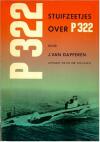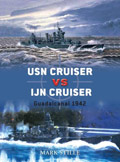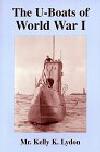Stuifzeetjes over P 322
Van Dapperen, J.
1964, Amsterdam
75 pages
| Type. | Biography |
| Pros. | Amazing language rhetoric/writing style. Great account of the cameraderie experienced under such conditions. The freshness of the book as it was written right after the war. |
| Cons. | Not as personal as some others. The duties of the author are not well documented. The accounts of some of the war patrols are very short and leave the reader wondering what exactly happened. Overall, great but too short. |
| Rating. |  |
 This book is a true piece of history. Written in the old Dutch grammatical
style, it is a pleasure to read and one can sense the the true manners of
the author and the time. Written two years after the war, this true account
is very vivid and serves as an accurate representation of the life and times
aboard a Dutch submarine during World War I. The story revolves around
the famous Zwaardvisch submarine, the boat that crossed the globe on many
adventures and encountered many close calls. This boat and its crew are
also famous for torpedoing a German U-boat (U-168, Kptlt. Helmut Pich).
This book is a true piece of history. Written in the old Dutch grammatical
style, it is a pleasure to read and one can sense the the true manners of
the author and the time. Written two years after the war, this true account
is very vivid and serves as an accurate representation of the life and times
aboard a Dutch submarine during World War I. The story revolves around
the famous Zwaardvisch submarine, the boat that crossed the globe on many
adventures and encountered many close calls. This boat and its crew are
also famous for torpedoing a German U-boat (U-168, Kptlt. Helmut Pich).
The story starts in England as the boat is just being laid down. The author gives great detail about the boat itself and its crew. However, not much is clear on the author's specific duties. The life on board a submarine is described well. The book itself is quite short and after the initial boat descriptions and some very minor training patrols, the author goes right into describing war patrols. The first patrols do not reap any worthwhile rewards until the encounter with U-168. The encounter itself is well described and quite exciting, including all the procedures leading up to the firing of the torpedoes. However, the reaction to the actual sinking is somewhat bland as the description of the attack stops right after the boat is sunk. No real description of picking up survivors, including Kptlt. Helmut Pich, are given. In a way this is somewhat disappointing, but understandable as probably during the time it was written, it may not have been appropriate.
Throughout the book, a great comaraderie is built up among the crew. The closeness created in submarine environments is evident from the author's care for his friends and shipmates.
Like other Dutch submarines entering the Indian Ocean and Java Sea theatres of war, the Zwaardvisch (P322) also stops in Perth in Western Australia for supplies and time off. The author speaks of Australia briefly and there is one memorable story on their way out of Perth. A leak is discovered and requires to be plugged from the outside. A friend of the author goes down underwater and attempts to fix it. Since the hole is on the bottom of the keel, it is quite a way down. The friend is the last one to attempt it and is known for holding his breath. The friend goes underwater and is gone for 5 minutes! Everyone is stunned and thought he was dead and started going throught the emotions. He finally comes up and it turns out he found an oxygen bubble and was able to plug the hole. This is one of the many interesting stories!
The sub sees more action in the Japanese theatre of war and is depth charged quite heavily in several attacks. The author attributes his survival to pure luck. Quite amazing really. The story ends with the boat being used as a transport ship shortly after the war to bring back Dutch citizens to Holland. This is where van Dapperen is in command of the boat for the first time. The story ends there.
Overall, a good read and highly recommended. Since it was written right after the war, the way things are described make this book very special. The author should be praised for this marvelous piece of history. Difficult to find but worth adding to one's personal library!
Review written by Fin Bonset.
Published on 14 Jan 2001.
Return to our main review page.



